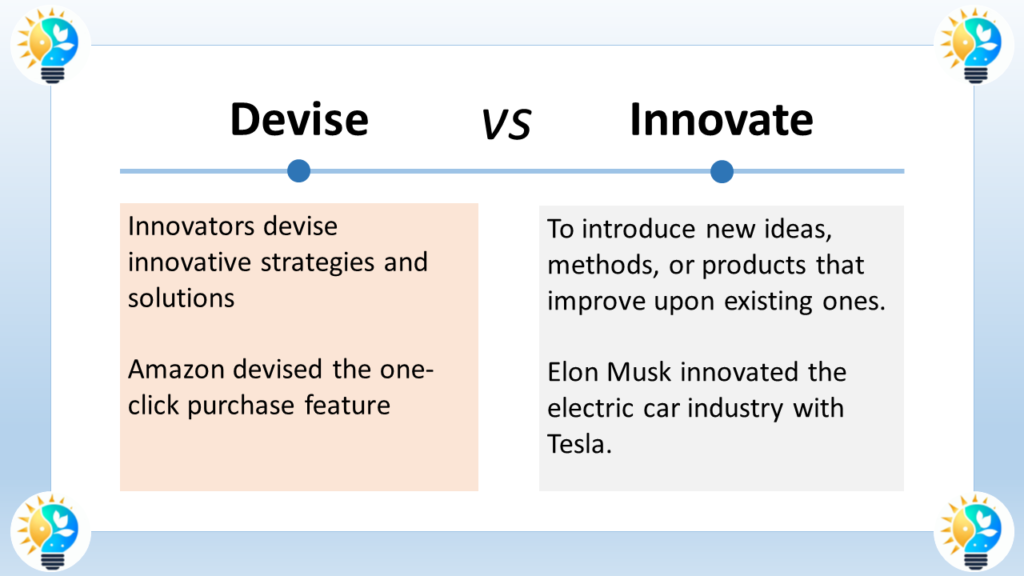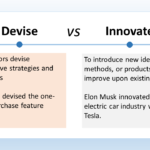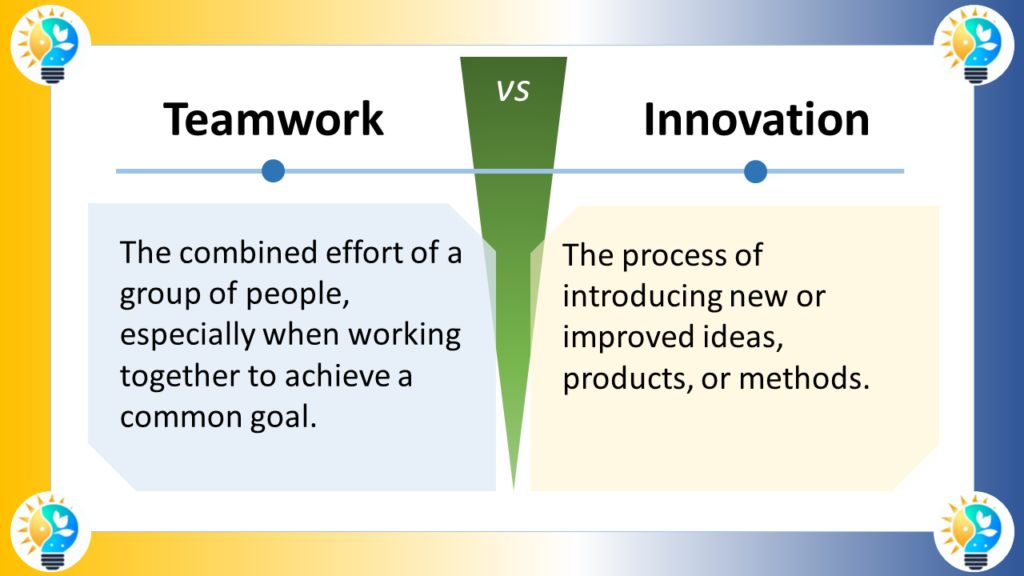Devising involves creating a plan or idea, while innovating involves implementing new ideas to improve existing ones.
Devising is often a more intellectual process, while innovating involves taking action.

Innovate vs. Devise: Understanding the Relationship
When it comes to creating new ideas, products, or solutions, two terms often come to mind: innovate and devise. While these words are sometimes used interchangeably, they have distinct meanings that are important to understand. In this article, we’ll explore the relationship between innovate and devise, and why it matters for businesses, organizations, and individuals.
Defining Innovate and Devise
Before we dive into the relationship between innovate and devise, let’s take a closer look at what each term means.
To innovate means “to make changes in something established, especially by introducing new methods, ideas, or products”. In other words, innovation involves improving upon existing ideas or creating entirely new ones. Innovation can be incremental or disruptive, depending on the scope and impact of the changes being made.
to devise means “to plan or invent (something) by careful thought and consideration”. Devise is often used to describe the creation of a solution to a specific problem or challenge. When we devise something, we’re using our ingenuity and creativity to come up with a new approach.
More Synonyms on innovation, innovate and innovative:
- Adapt
- Advance
- Change
- Create
- Cultivate
- Devise
- Develop
- Discover
- Disrupt
- Evolve
- Experiment
- Fashion
- Generate
- Imagine
- Initiate
- Introduce
- Invent
- Modernize
- Originate
- Pioneer
- Progress
- Prototype
- Radicalize
- Reform
- Reinvent
- Renew
- Revolutionize
- Restructure
- Set Trends
- Transform
- Upgrade

Innovation is considered as a driving force in progress.
It includes the introduction of novel ideas, methods, or products that bring positive change and advancement.
For more information about innovations, check our glossary
The Relationship Between Innovate and Devise
While innovation and devising are distinct concepts, they are closely related. In fact, devising is often a key component of the innovation process. When we’re trying to come up with new ideas or solutions, we need to engage in careful thought and consideration in order to devise a plan of action.
At the same time, innovation goes beyond simply devising a solution. In order to truly innovate, we need to take that solution and turn it into something tangible and valuable. This may involve testing and refining the solution, scaling it up, and bringing it to market.
Why the Distinction Matters
Understanding the relationship between innovate and devise is important for a few reasons. First and foremost, it can help us be more intentional and strategic in our approach to creating new ideas and solutions.
For example, if we’re facing a specific challenge or problem, we may need to focus more on devising a solution than on innovating as a whole. By zeroing in on the specific problem and brainstorming creative solutions, we can increase our chances of success.
On the other hand, if we’re looking to drive growth and stay competitive in our industry, we may need to focus more on innovation as a whole. This means not only devising new ideas and solutions, but also investing in the resources and capabilities needed to bring them to life.
Examples of Innovate and Devise in Action
To better understand the relationship between innovate and devise, let’s look at a few examples.
- Tesla is a company that is known for its innovative approach to electric vehicles. However, the company didn’t simply set out to innovate for the sake of it. Instead, it identified a specific problem (the need for more sustainable transportation) and devised a solution (electric vehicles). Once the solution was devised, Tesla invested in the resources and capabilities needed to bring it to market, ultimately disrupting the entire automotive industry.
- Amazon is another company that is known for its innovative approach. One example of this is the Amazon Echo, a smart speaker that uses voice recognition technology to perform a variety of tasks. However, before Amazon could bring the Echo to market, it needed to devise a solution that would meet the needs of its customers. This involved carefully considering the features and functionality that would be most useful, as well as the design and user experience.
- NASA is an organization that is constantly devising new solutions in order to push the boundaries of what is possible. For example, the Mars Rover is a robotic vehicle that is designed to explore the surface of Mars and gather data about the planet’s geology and climate. In order to devise a solution that could withstand the harsh conditions on Mars, NASA engineers had to carefully consider factors such as the terrain, temperature, and radiation levels.
Can innovate and devise be used interchangeably
The difference between “innovate” and “devise” lies in their emphasis. “Innovate” emphasizes the creation of something new or original, especially by introducing new methods, ideas, or products. On the other hand, “devise” focuses on the development of a plan or solution, often involving the use of one’s intellect to design or plan something. Both words are formal and commonly used in professional or academic contexts, with “innovate” being more commonly used in business.


